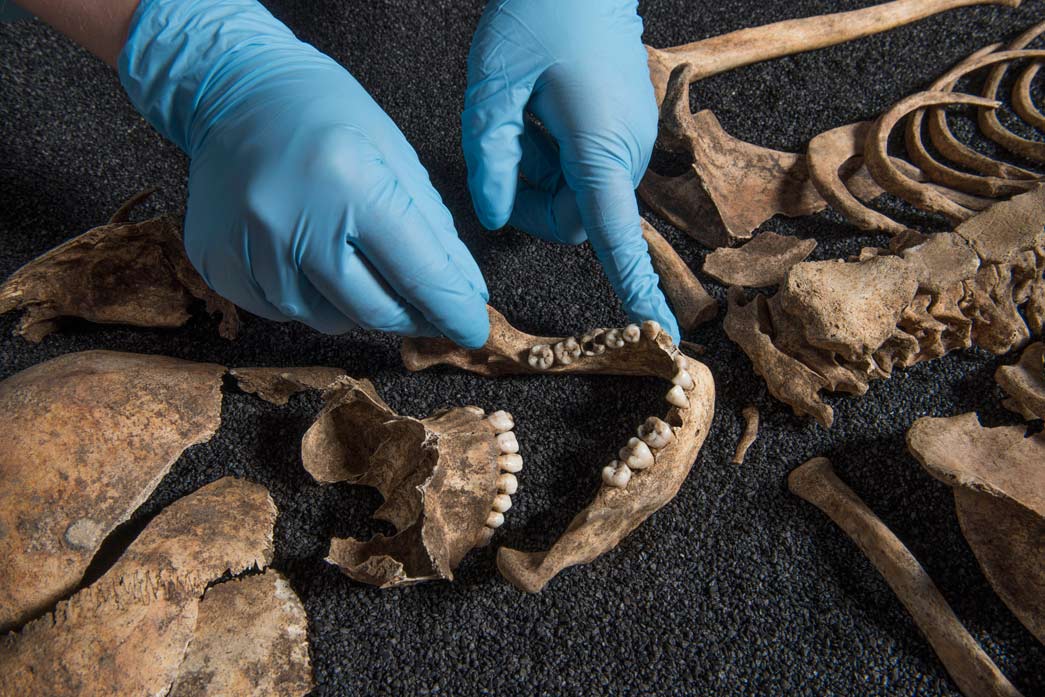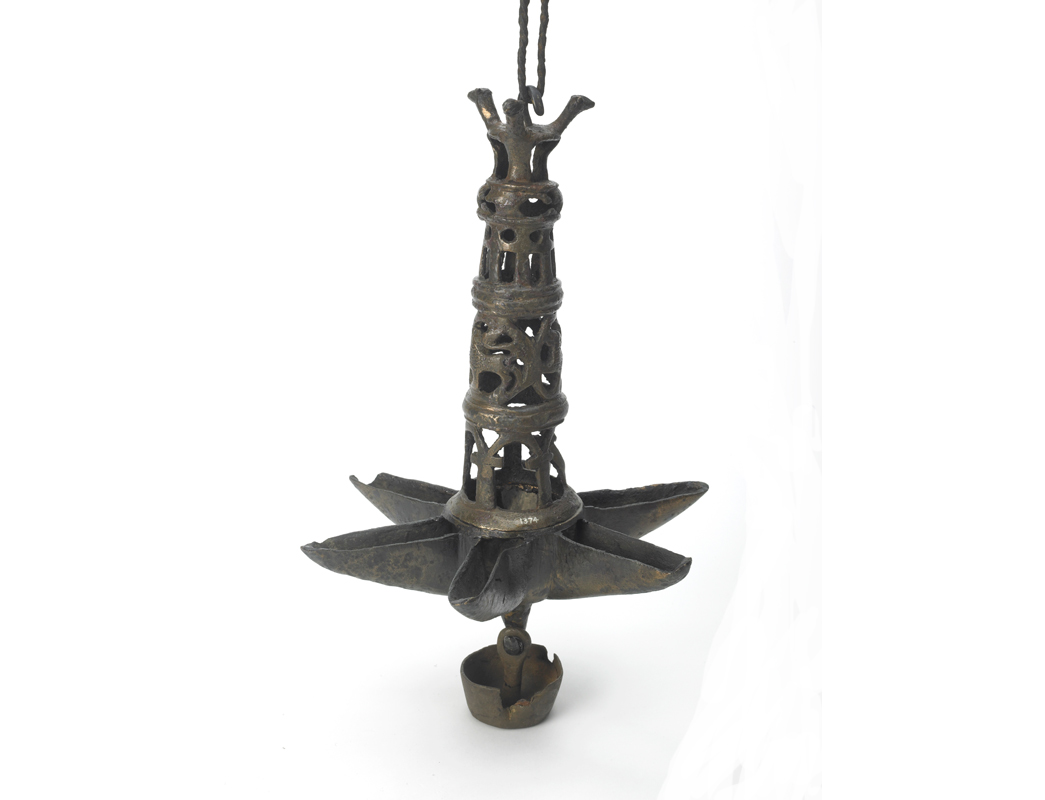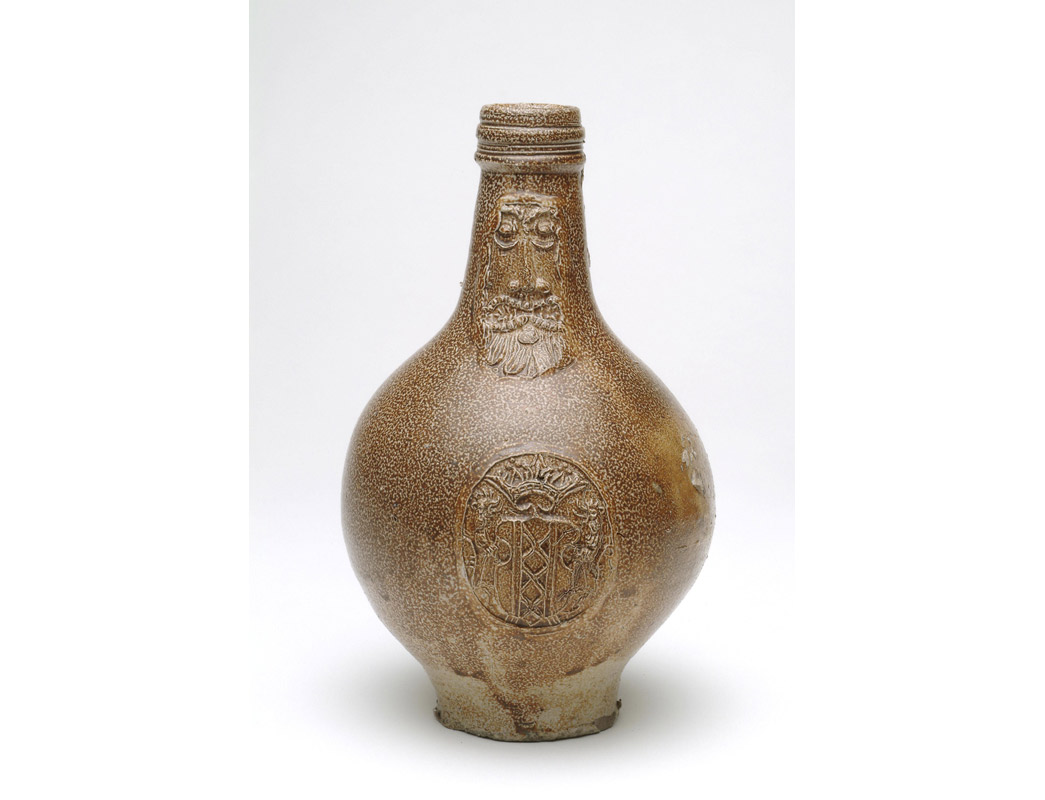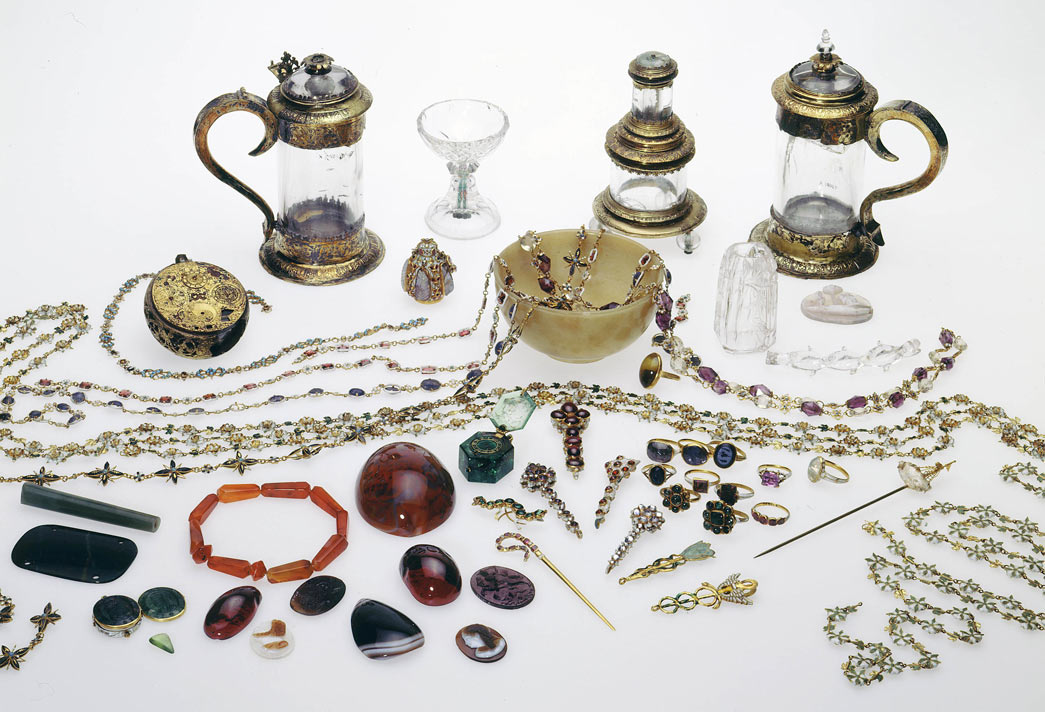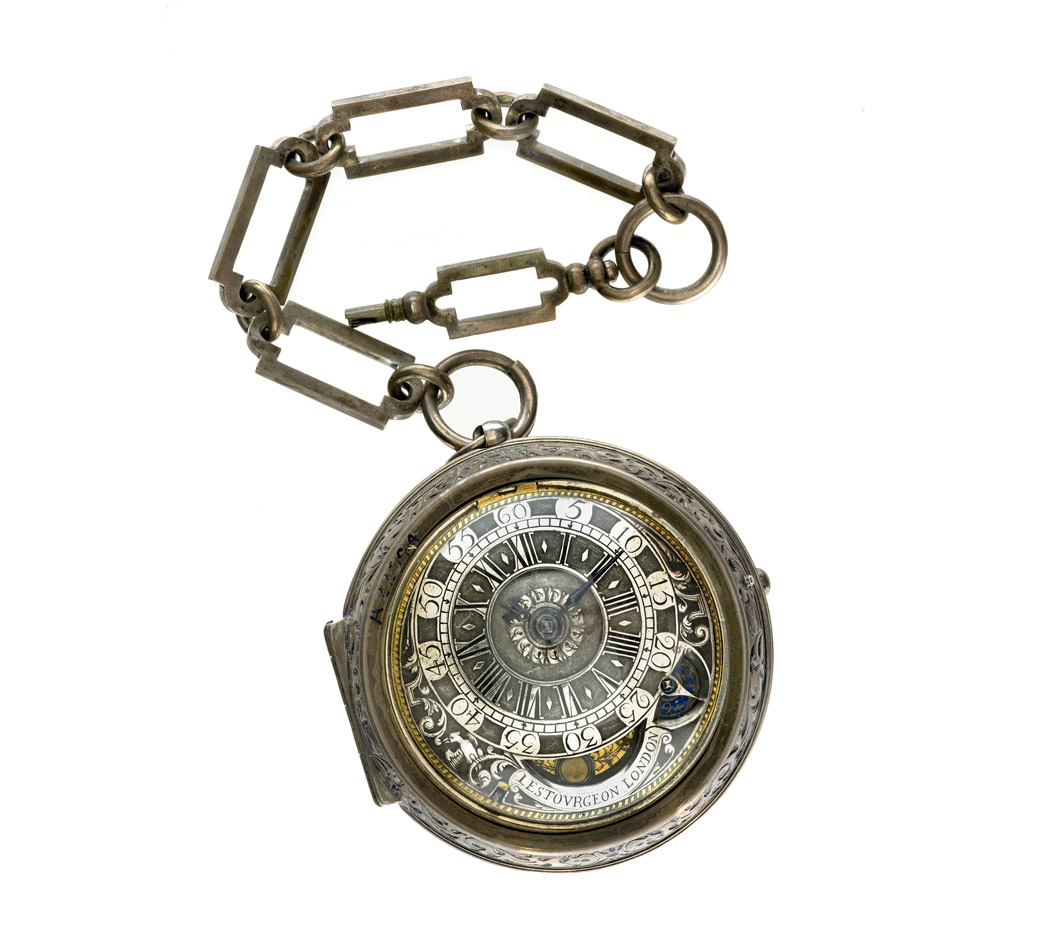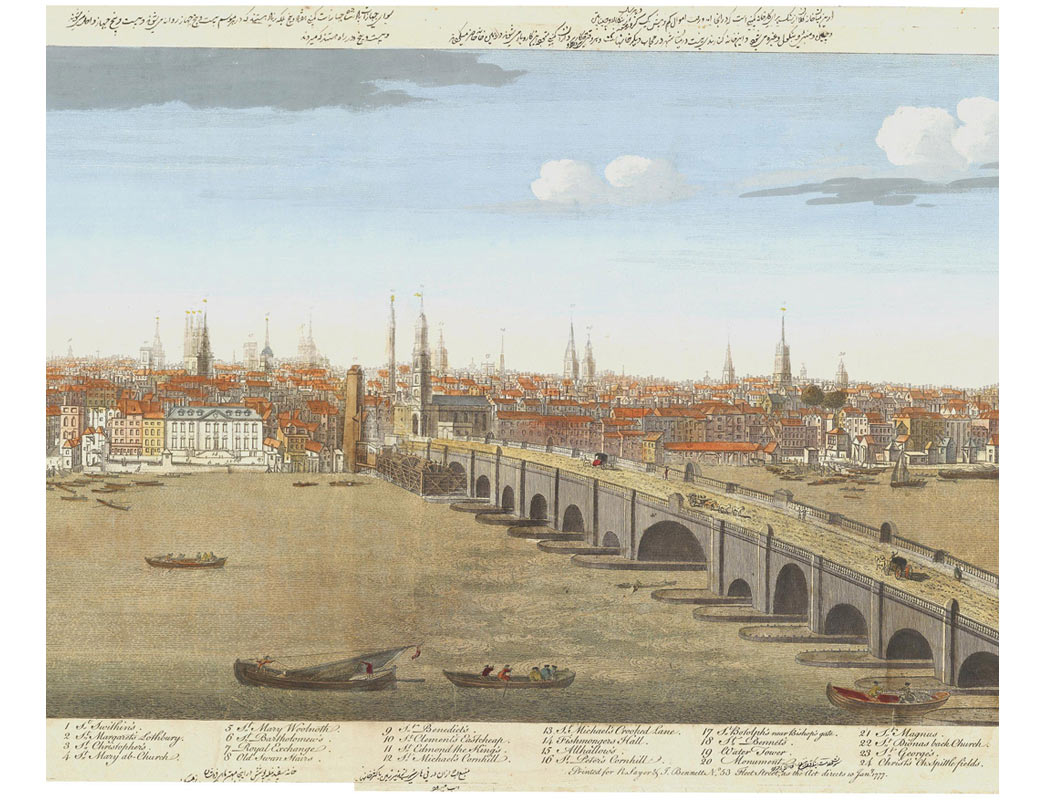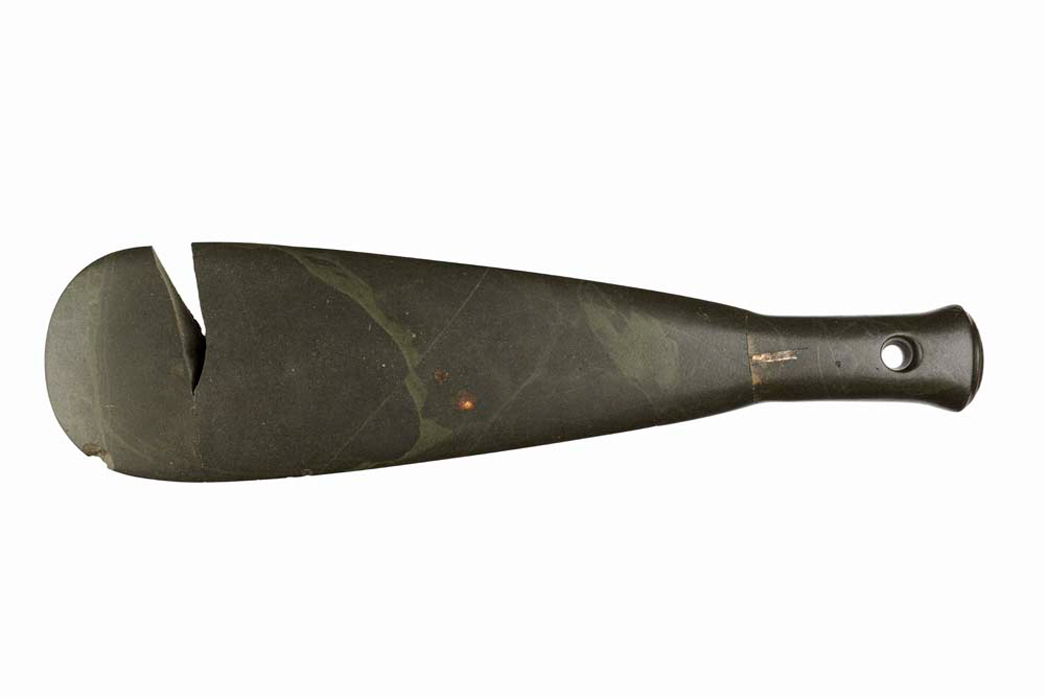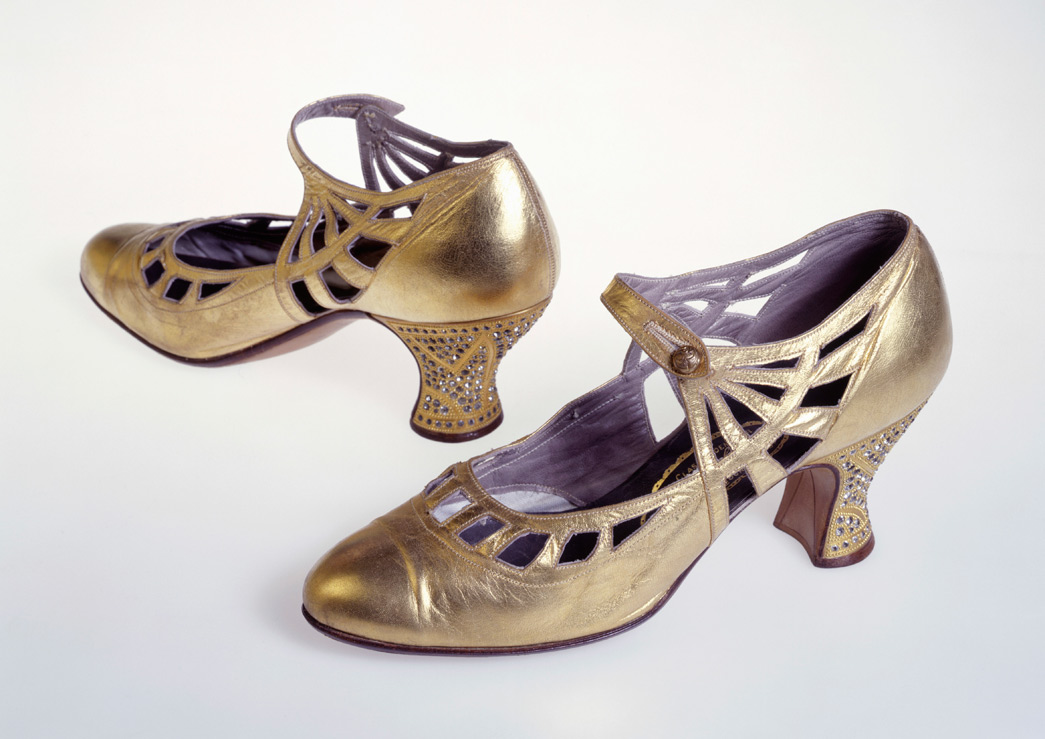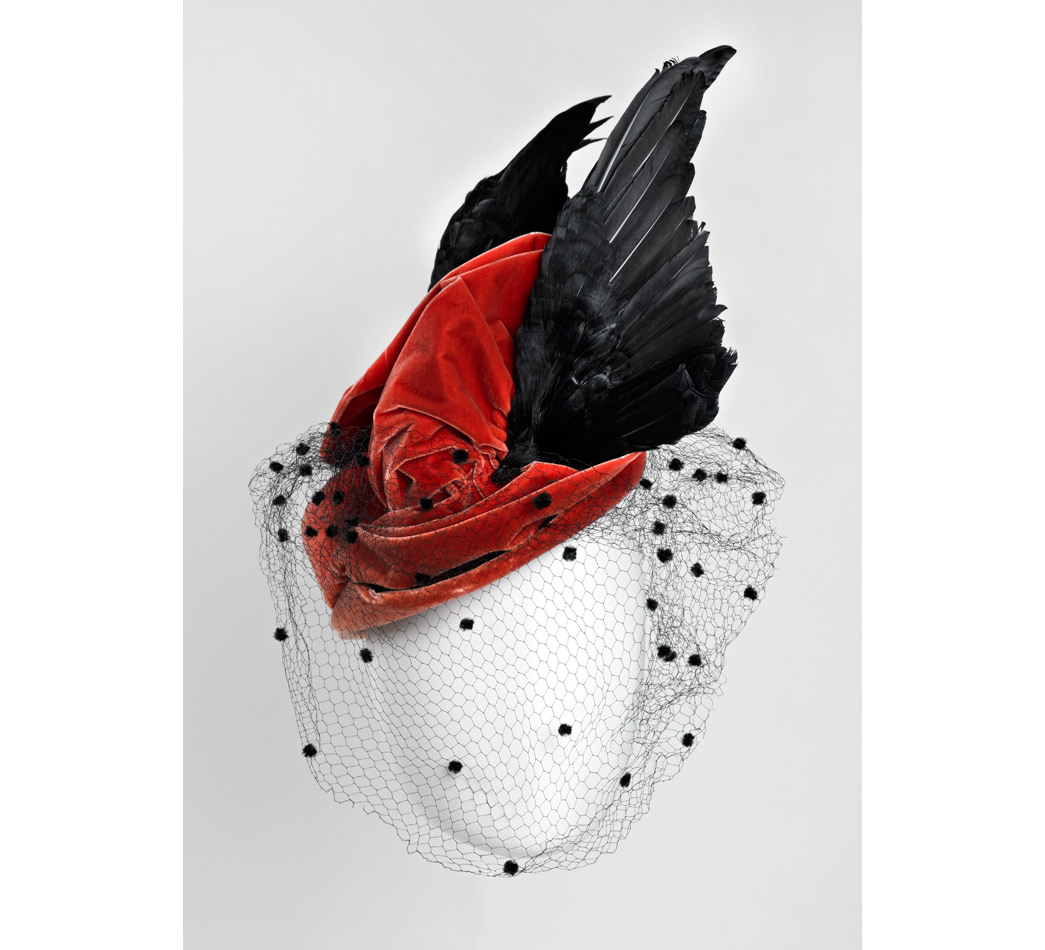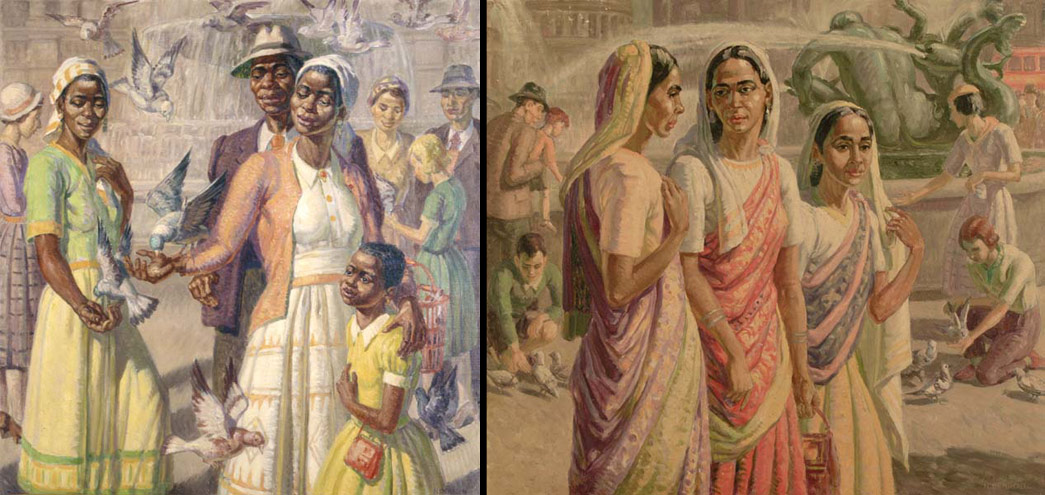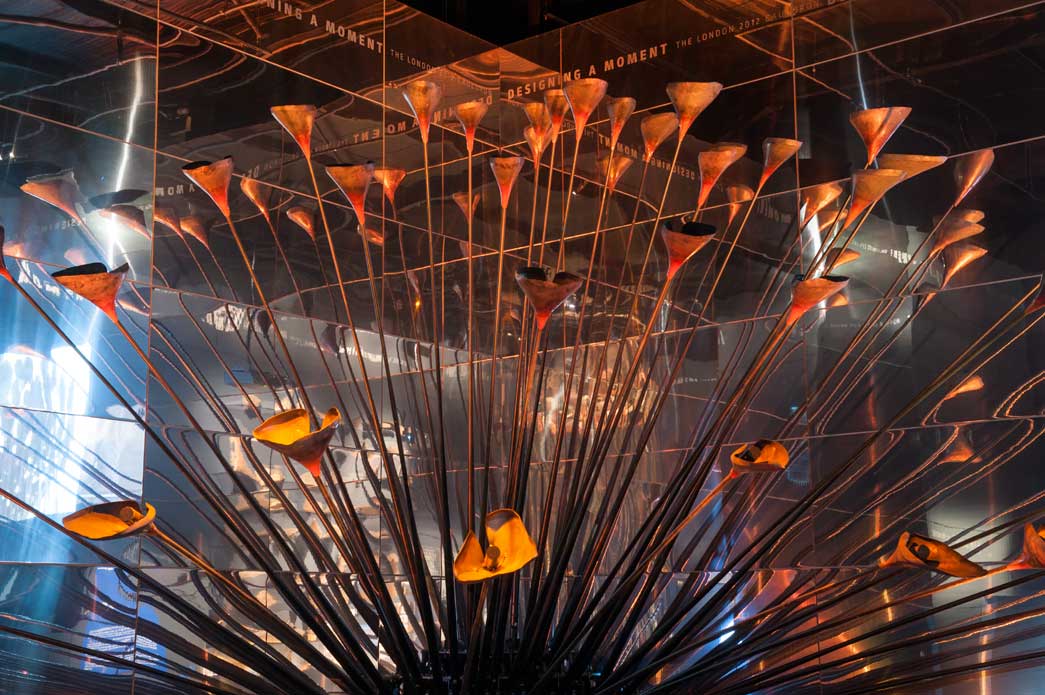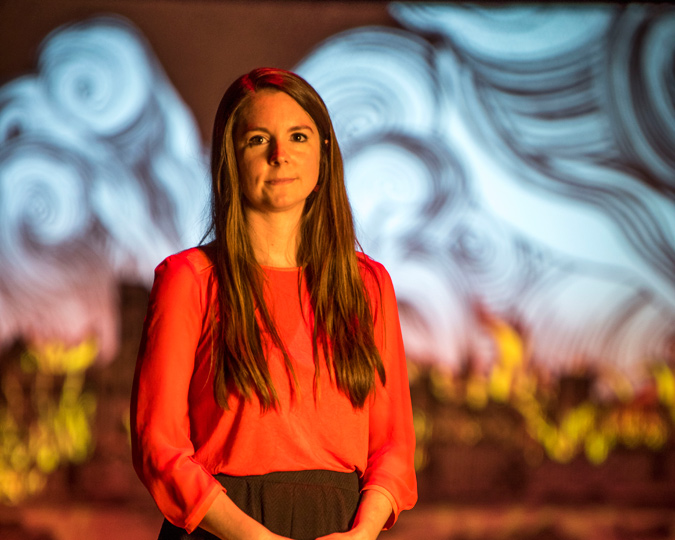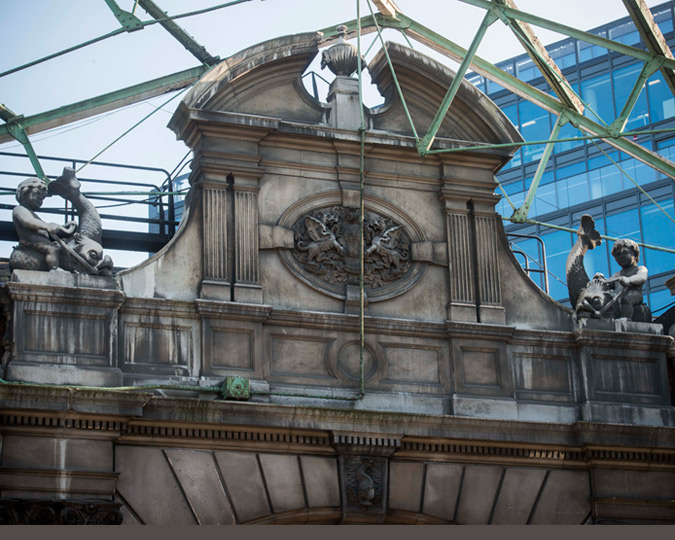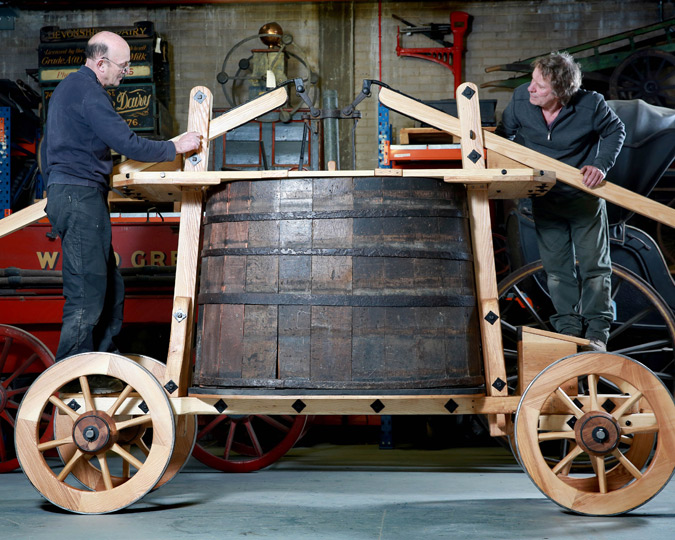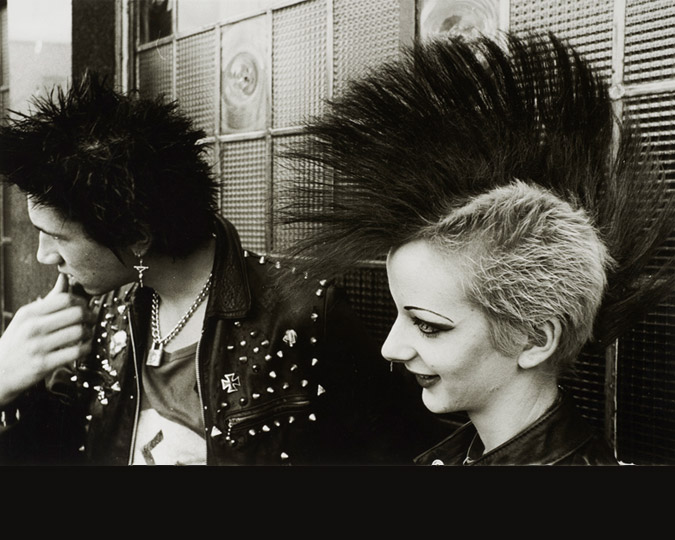For over two thousand years, London has been a global city, taking in people, goods and ideas from across the world. That cosmopolitan heritage is reflected in the Museum of London’s collections. Our curators have selected 15 items from across our collections, each showing that London is, and has always been, open to the wider world.
For as long as London has existed, it’s been strongly connected to the rest of the world, through both migration and trade. We wanted to show how London’s identity is rooted in its history as a global city, through 15 objects with cosmopolitan connections.
Sharon Ament, Director of the Museum of London, has said: “For two thousand years London has been a global city taking in people, goods and ideas from across the world. Almost every item in our collection is a reminder of London’s connectivity to the rest of the world and openness as a city. It is a story we proudly tell in our galleries and exhibitions. The Museum of London tells the story of a London that has been open to everyone since its very beginning and, I hope, a London that will continue to be into the future.”
1. The Lant Street teenager, AD 100 - 400
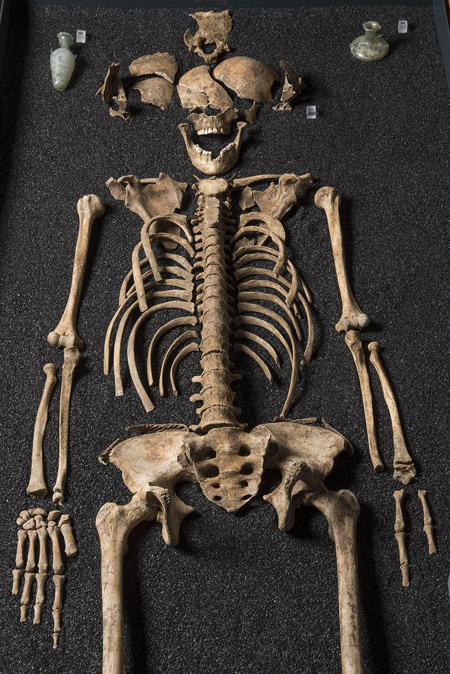
The Lant Street teenager
Laid out alongside her grave goods
These human remains date from the Roman city of Londinium, and were excavated from Lant Street in London. Ground-breaking research at the Museum of London used evidence from ancient DNA and isotopes in tooth enamel to trace both the ancestry of several Roman Londoners, and where they had lived throughout their lives.
This girl, who was about 14 years old at the time she died, had blue eyes, and her maternal ancestry can be traced to south-eastern Europe and west Eurasia, at the eastern fringes of the Roman Empire. However, stable isotope evidence from her diet shows that she was born in north Africa, and travelled to Londinium at least four years before she died- proof of the cosmopolitan and diverse nature of ancient London. Her burial is unique in London, and has parallels to north Africa and elsewhere in Europe. Many soldiers from these parts of the Empire were stationed in Londinium. Perhaps she was a soldier’s daughter, his wife, or even a beloved female slave.
As senior curator Caroline McDonald put it: “We have always understood that Roman London was a culturally diverse place. Now science is giving us certainty. People born in Londinium lived alongside people from across the Roman Empire exchanging ideas and cultures, much like the London we know today."
2. A Londoner's stone tablet, AD 160
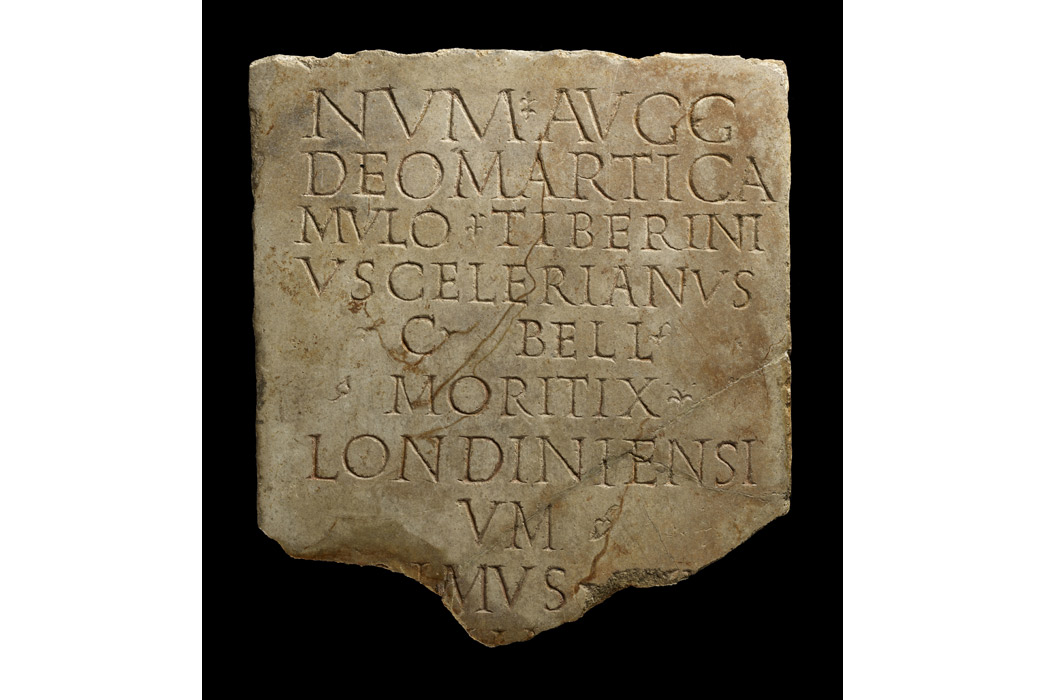
Marble plaque dedicated to 'the Divinities of the Emperors (and) to the god Mars Camulos'
Created c. AD 160; ID no. LLS02[1566]<253>
This marble plaque is inscribed with a religious dedication, and was excavated from a site believed to have been a temple to Mars Camulos. It is the earliest known stone tablet to name the city of London (or Londinium to the Romans). The man making the prayer left his name carved into the stone: "Tiberinius Celerianus", a citizen of the Bellovaci. The Bellovaci were one of the tribes of the Belgians, who lived in north-eastern Gaul- present-day Belgium and France. Tiberinius also calls himself a Moritix, probably referring to the Gaulish merchants who traded by sea between Roman Britain and the continent.
This tablet is the first known use of the word Londiniensi , or Londoners, and Tiberinius identifies himself as one of them. In fact, he says he's the first Londoner to ever... and at that point the tablet unfortunately breaks off (literally), so we don't know what Tiberinius was the first to do. This object, commissioned by a Belgian trader, shows that as long as there have been Londoners, they've been connected to the broader world.
3. Hanging lamp in the Jewish style, 1200s
This early medieval brass hanging lamp is made in the same shape as the traditional Jewish 'Sabbath lamp', lit in Jewish homes on Friday evenings and on the eve of festivals. It has a central container for oil with six spouts to hold wicks, and an openwork tower decorated with three lions. The small dish underneath is designed to catch oil drips. A lamp of this design would have hung in the houses of the few hundred Jewish people who lived in London from 1070 - 1290.
A number of medieval lamps of this type have been found in England- all in towns that had Jewish communities before 1290. It's uncertain whether they were actually used by Jewish families, or whether they were simply made with similar designs by Christian artisans. Either way, they testify to the small but vibrant Jewish presence in England during the medieval period, until the expulsion of Jewish people in 1290 by Edward I.
4. Bartmann stoneware jug, 1650s
This type of jug is called Bartmann, a design named after the German for "bearded man"- for obvious reasons. These drinking vessels were made on the continent, imported to London from Cologne and Frechen in Germany in huge quantities. These decorated stoneware jugs started to appear in London by 1510. They were luxury items used by the upper and middle classes to serve wine at the dinner table. At this time people started to have more disposable income to spend on fancy tableware to impress their friends. Since stoneware was cheaper than glass and silverware, the people of middling income could afford it, and used it to imitate the fine dining habits of the rich.
This jug is decorated with the city arms of Amsterdam, and was probably imported by a Dutch trader. The Museum of London collection includes many dozens of these sorts of vessels- testimony to the huge volume of trade that linked London with Europe at the time.
5. The Cheapside Hoard, 1570 - 1630
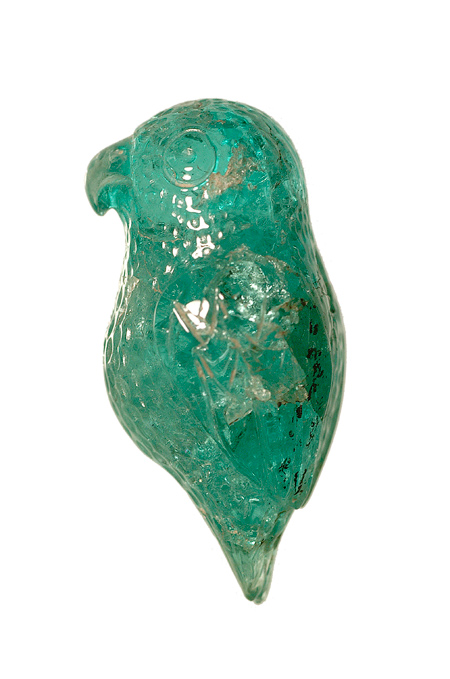
Emerald stone carved into a parrot
Part of the Cheapside hoard; ID no. A14273
The Cheapside Hoard- of which this is only a small part- was originally the stock of a jeweller or goldsmith in early Stuart London. It was buried in the cellar of a house on Cheapside in the 17th century, and discovered by workmen in 1912. The Cheapside Hoard contains an array of precious and semi-precious gems from many parts of the world, which provides evidence of London's worldwide commerce in the Elizabethan and Jacobean period.
Most of the materials for the hoard's jewellery had been brought impressive distances to the London workshop. The emeralds - like this one carved into a parrot- would have come across the Atlantic from what is now Colombia. Opals were brought from Hungary, garnets travelled from India and lapis lazuli from Afghanistan.
7. Pocket watch made by a French Huguenot, c. 1702
This beautiful pocket watch was manufactured by the French watchmaker David Lestourgeon- his name is written at the bottom. He emigrated to London from Rouen in around 1681. Lestourgeon, a Huguenot (Protestant), worshipped at one of the French churches in Spitalfields. Fleeing religious persecution in their native France, the Huguenots were one of the first major groups to immigrate en masse to London. The Huguenots brought to their new home important knowledge and skills from the major French clock and watch making centres.
The watch appears to have been made to commemorate the death of King William III. On the back of the movement (the watch's mechanism) is a bust of William III, the date of his death (8th March 1702) and a skull and cross bones above the letter W. The Dutch William III 'of Orange' became king in 1688, after landing in England with a Dutch army. So the watch was made by one immigrant to London in order to mark the death of another.
8. A well-travelled General View of London and Westminster, 1777
This "prospect", or drawing, shows Westminster and the City of London in 1777, and was created by the brothers Samuel and Nathaniel Buck as an engraving. It shows a remarkably accurate view of the city, including the newly-widened London Bridge on the far right. There are also some annotations, added in later by one of the engraving's owners.
It's very difficult to see details in the image, because the actual object is quite large- just over four metres wide, in fact. If we show just a small section of the panorama, we can get a look at the notes written on this very well-travelled object.
The print is covered with notes written in Persian! Although Persian is spoken in several parts of Asia, the words used in these annotations show that the writer came from India. One of these handwritten notes even provides a date: 1194, or 1780-81 in the Christian calendar. Persian was the language of the Indian courts at that time. The person who gave it to the museum found it in what he called a 'junk' shop in Hyderabad, India- meaning that it must have been taken from London in the years between 1777 and 1780, perhaps as a gift to an Indian monarch or aristocrat. Years later, after a long excursion abroad, it returned to the city of its creation- where it's now on display in the Museum of London.
9. Māori hand club, 1800s
This is a patu onewa (patu = weapon; onewa = dark grey stone) from New Zealand. These clubs were used as weapons by the Māori peoples, but are also beautiful objects. They had to be painstakingly polished to achieve the flat, smooth surface, and the hole drilled in one end would be used to fasten the patu to the user's wrist. It's not certain how this object made its way to the city of London. It was found amongst 19th century rubble just off the Old Kent Road. Patu were brought home by travellers to the newly contacted islands of New Zealand starting from Captain Cook in the 1770s, and would have been rare and exotic treasures.
10. Evening shoes by Ignazio Pluchino, 1925
These beautiful gold leather evening shoes were made by the 'high class shoemaker' Ignazio Pluchino. Ignazio Pluchino was born in Sicily and moved to London in 1900 where he established a successful shoemaking business at 83 Walton Street, London SW3. Ignazio and, later his son John, made beautiful, bespoke shoes for wealthy clients. Each pair of shoes was hand made to fit the client, who had a personal cast made from which the shoemaker could work. It took three days, working long hours, to make one pair of shoes. Ignazio and John made most of the shoes but occasionally they took on extra workers, who were always Italian.
These shoes have a grey kid lining and brown leather insole. The Louis heels are decorated with small diamantes and gold beads in geometric pattern. They were made for the "Countess" Lena de Hamon, wife of the fashionable Irish occultist and palm-reader known as "Cheiro".
11. Hat by Otto Lucas, 1945-50
The German-born Otto Lucas (1903-1971) opened a London salon in 1932. His creations were not only popular in England, but also in France and America. It doubtless helped his hat sales that headgear (other than that made of scarves) was coupon-free during World War II. This coral red velvet pillar box has a small shaped rim, in the style of a 19th century riding hat. The black net veil has tiny tufts of soft black 'fur' dotted throughout and this can be worn either up, on the black wings and velvet decoration, or down, covering the face.
12. 'Caribbean family in Trafalgar Square' & 'Indian women in Trafalgar Square', Harold Dearden, 1950s
This pair of paintings depicts two groups of people, one Indian and one Afro-Caribbean, in Trafalgar Square during the 1950s, at a time when most ethnic minorities were newcomers to London. When these pictures were painted, the debate about commonwealth immigration to Britain was at its height. The 1948 British Nationality Act extended citizenship rights to people in commonwealth countries (such as Jamaica and, at that time, India and Pakistan) and the first Windrush sailings took place in the same year. The painter, Harold Dearden, was portraying the changing nature of contemporary London, and perhaps painting the city he wished to see.
In this painting a number of white people are included in the background. The juxtaposition suggests an inclusive and harmonious society, in which immigration is readily accepted. Feeding pigeons has been identified as an activity enjoyed by 'newcomers' to the capital: by implication, the Caribbean family have newly arrived in the country. There may also be a subtle religious dimension to this work. Harold Dearden was a Christadelphian, believing in harmony between all Christian brethren.
13. Outside the Piss House Pub, Portobello Road, Charlie Phillips, 1968
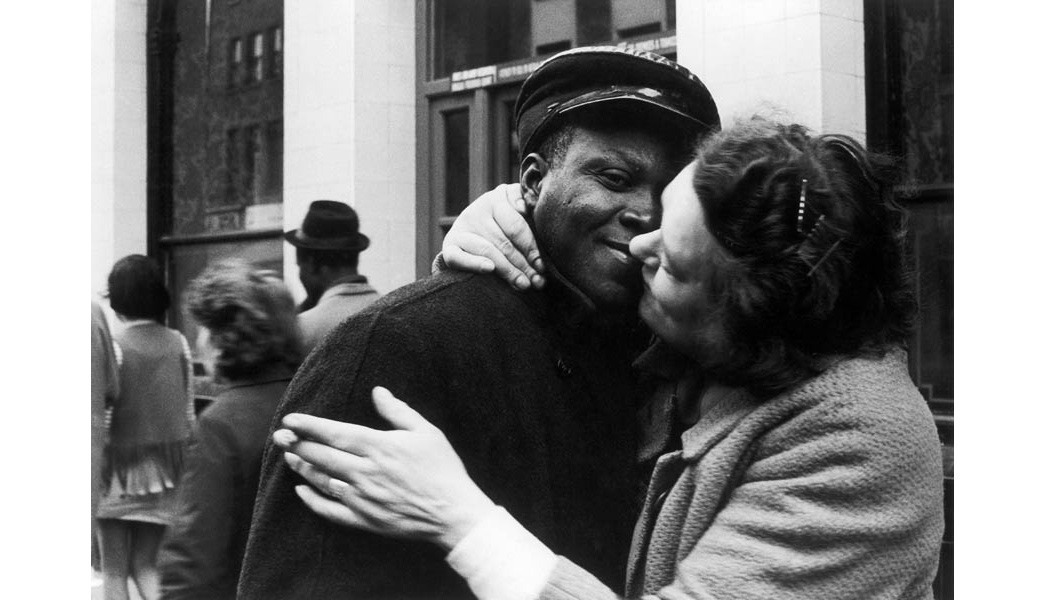
Outside the Piss House Pub, Portobello Road
Charlie Phillips, 1968; ID no. IN40109. Purchased with the assistance of the ArtFund.
This photograph of a black man and a white woman embracing was taken by Charlie Phillips outside the Piss House Pub in Notting Hill in 1968. 'The Piss House' was the local name for the pub on the corner of Blenheim Crescent and Portobello Road. A number of photographs by Charlie Phillips depict people and locations in Notting Hill, where he grew up after leaving Jamaica in 1956. He started taking photographs after being given a Kodak Brownie camera by a black American serviceman, and later became a freelance photographer. Phillips's photographs of Notting Hill reflect a rapidly changing area, particularly its growing black population. Phillips has said that at a time of growing racial tension, he wanted to photograph black and white people living together as a community.
14. A group of young Asian children pose at a street party wearing union jack hats for the wedding of Prince Charles and Lady Diana Spencer, Paul Trevor, 1981
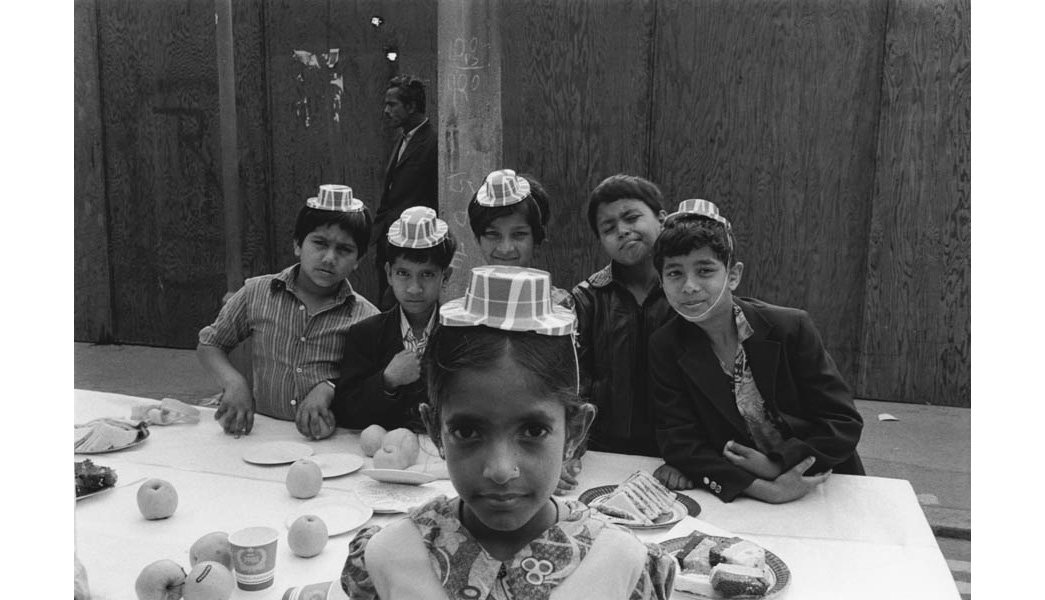
A group of young Asian children pose at a street party wearing union jack hats for the wedding of Prince Charles and Lady Diana Spencer
Paul Trevor, 1981; ID no. IN16114
London-born photographer Paul Trevor worked between 1973 and 2000 on the Eastender Archive, a long-running project to chronicle the changing communities around his home of Brick Lane. Paul has said his work "offers a picture of a multi-ethnic community surviving considerable hardship, racist tension and rapid social and physical change." This shot of a street party, captured on 29 July 1981 during the national holiday to mark the wedding of Prince Charles and Diana, shows the changing face of London in the 20th century.
15. 2012 Summer Olympics and Paralympics Cauldron
After winning the bid to stage the 2012 Olympic and Paralympic Games, the city focused on creating an opening experience which would welcome - and amaze - the world. The 2012 Summer Olympics and Paralympics Cauldron was created by the internationally renowned Heatherwick Studio, and has become one of its best known works. The Olympic cauldron consisted of 204 individual hand-moulded 'petals', one for each participating nation, each holding a torch. At the opening ceremony, the petals rose into place, creating a single, massive Olympic flame. This part of the cauldron is depicted frozen in time during the ceremony. Some stems have come to rest in their final positions while others have only just started to lift. The 2012 Cauldron is a reminder of a time when London declared itself truly open to the whole world.








